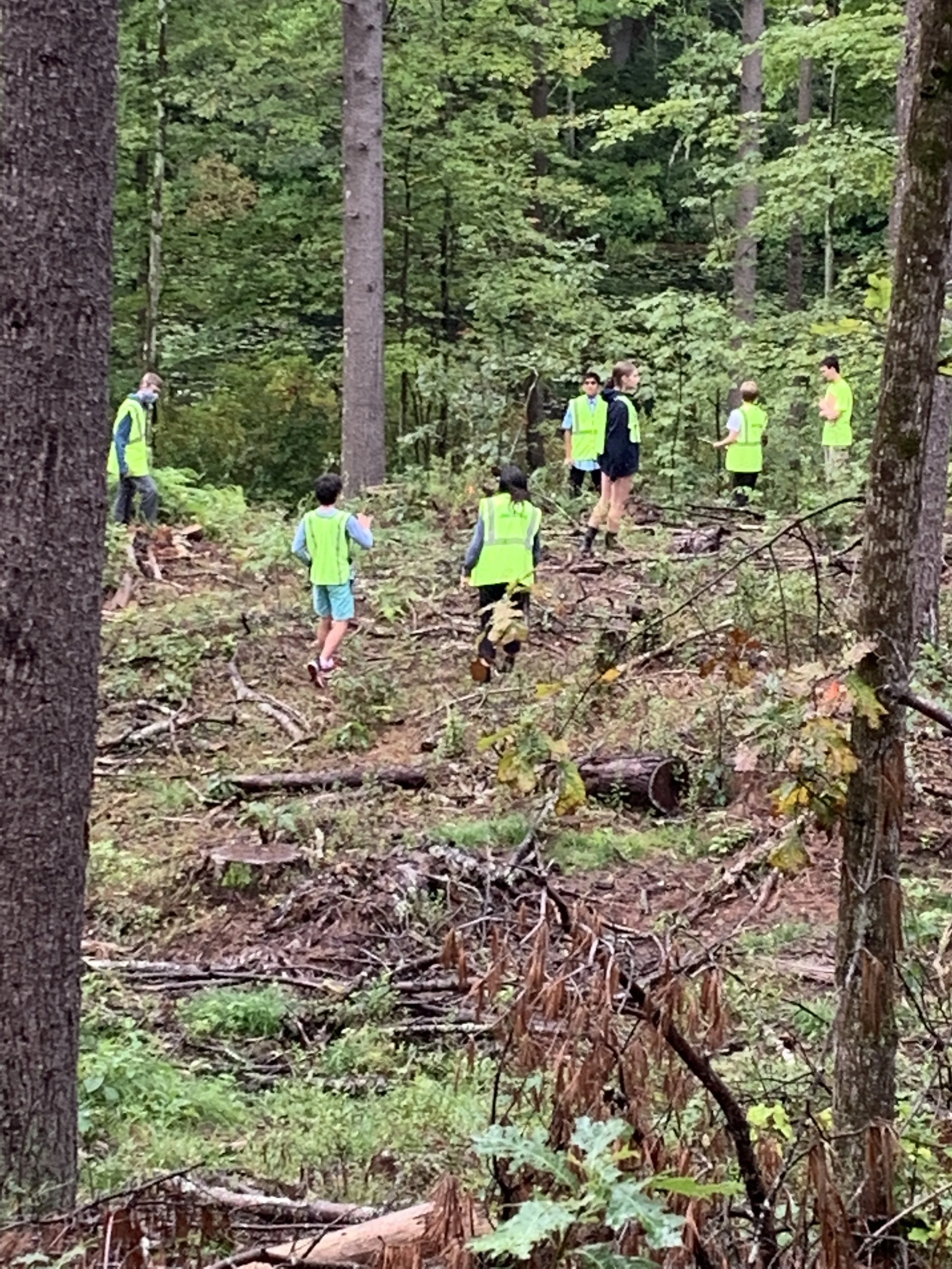This past fall, during their Earth and Human Studies (EHS) class, the Adolescent Program (AP) researched two plots of forest in a Forest Health Assessment which compared a mature forest to a recently logged forest. The project was completed with help from local foresters, and used curriculum resources from Project Learning Tree, which is the educational arm of the Sustainable Forestry Initiative.
8th year Ben Jedlinsky learning about forest surveys.
The recently logged area was in Silver Lake State Park and the other was in the Spalding Town Forest. Students looked for signs of disease, growth, debris, and were even able to measure the average amount of carbon stored in each tree. The class was split into several groups who each analyzed different aspects of forest health including tree and crown condition, forest diversity, wildlife, lichen abundance, soil quality, and regeneration. “Everyone took all of the data in our plots,” explains 9th year Pranai Rao. “We then combined the data from all of our sheets to make a final version and typed up a final draft in scientific paper form.” In addition to their conclusions, each report included an analysis of possible sources of error in their data/findings.
7th year Holly Gary measuring a forest plot.
“Without healthy trees in forests,” concludes the final report, “ not only will you see an unbelievably dramatic fall in the health of our planet, but countless species of animals will become extinct.” This is because “the health of the trees in a forest is crucial to the ecosystem. Animals use the trees for shelter, food, and camouflage. Trees Store carbon dioxide and release oxygen into the air. And trees control the flow of water.”
“According to the results we got,” says 9th year Naomi Carney, “the forest is overall pretty healthy in both the recently logged area and the undisturbed one. There is plenty of wildlife living in both places, and plenty of new trees and undergrowth where the forest has been logged. Both of which are very good signs.”
Many of the students enjoyed the field work “We got to go out into the woods at least once a week and observe our plots,” says Naomi. “We found lots of cool looking mushrooms, an osprey's nest, and some toads in the beaver pond. One time, we found a bunch of baby salamanders! It was overall a really cool experience to watch the plots change as the seasons changed around them.” Some students needed to add a little more to make the process fun. While doing the surveys, 7th year Holly Gary notes, several of them “spoke with British and Scottish accents, occasionally with some German and Russian accents mixed in there.”
7th years Carlo Vallejo and Holly Gary with their survey gear.
One of the nice things about this study is that it helped the AP students come to terms with the recent logging. “When the logging was happening last year, everyone was startled and slightly upset, in a "What are you doing to our forest?!?" kind of way,” says 8th year Helen Saunders. “The forest had changed so much, and it looked so different. Some of our favorite play places had been changed, and nothing looked the same.” But after they did the survey, the final report concluded that “in order to keep the forest healthy, logging to some degree is actually an effective way to help a forest ecosystem. Logging will clear up space for smaller trees, which will then become overstory. Also, planting trees in areas that have been heavily deforested can help regain the health of a forest to some extent.”
“Now that it has been a while since the logging,” says Helen, “more plants have started to grow back, and we have found new places to play. Although the forest changed a lot during the logging, we now know that change can be beautiful.”



